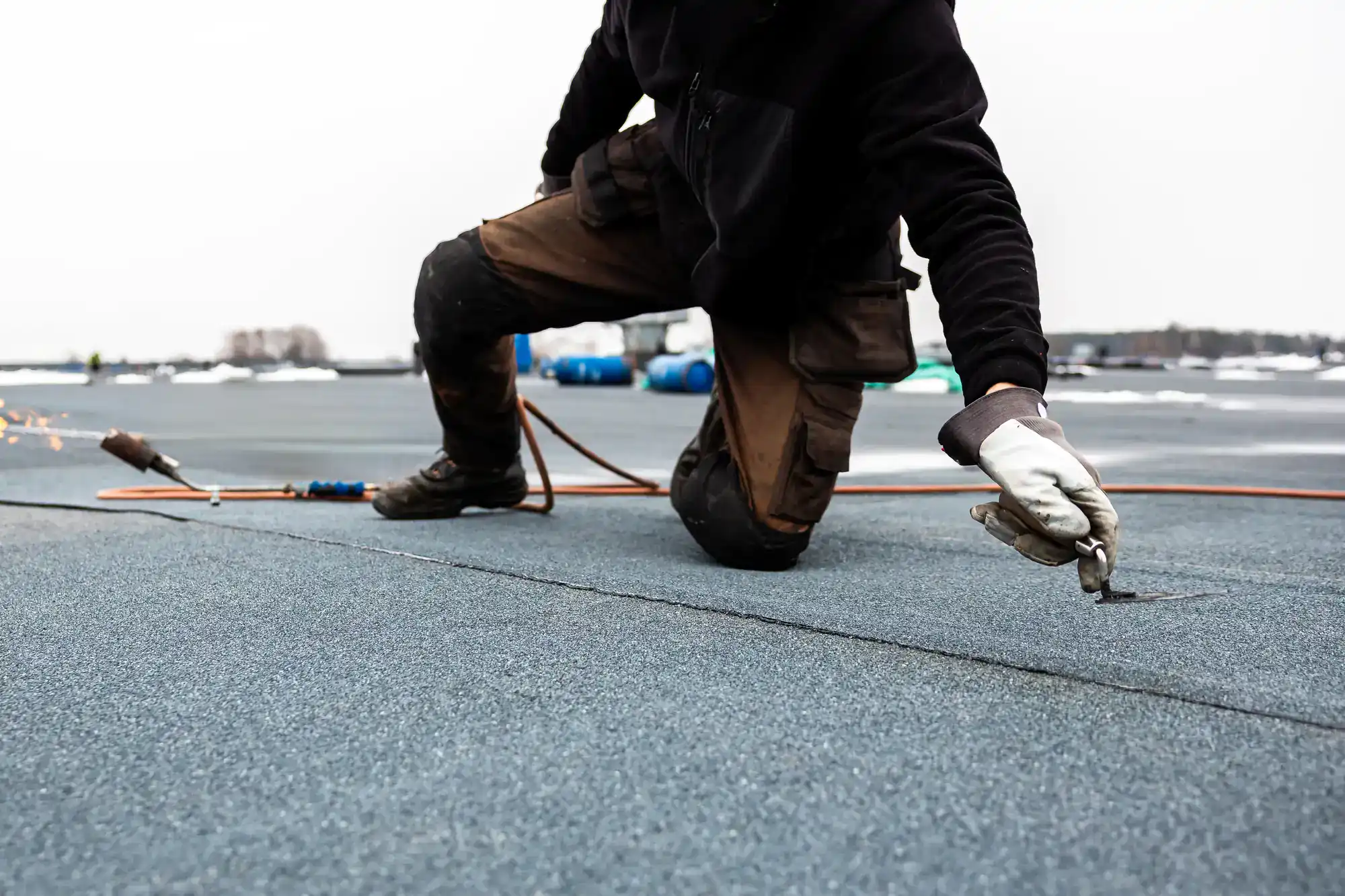
Hear from Our Customers
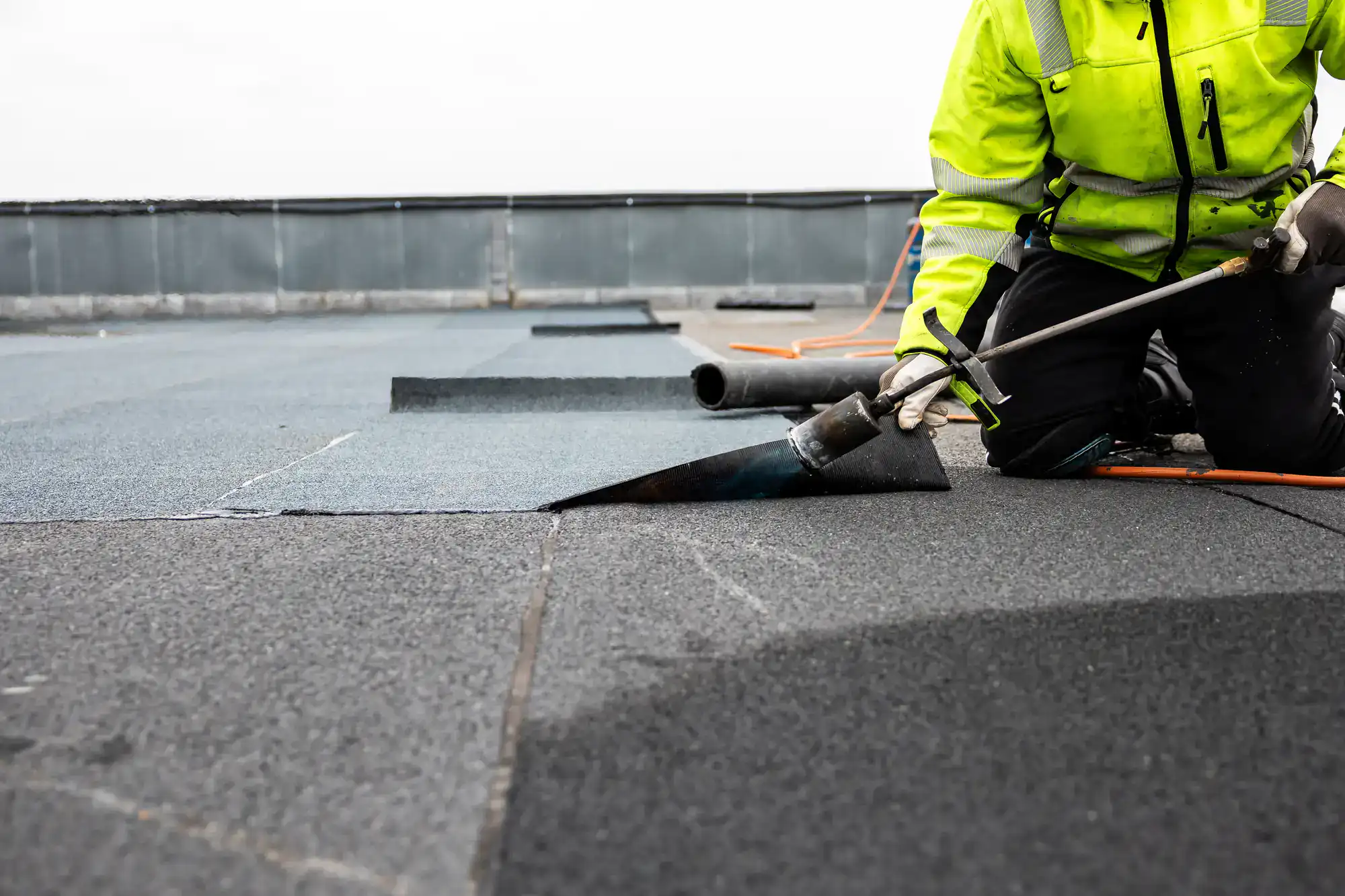
Your flat roof stops being a constant source of stress and starts being reliable protection. You get precise leak detection that finds problems before they become expensive disasters. Your energy bills drop because proper TPO and EPDM systems reflect heat in summer and retain warmth in winter.
When your flat roof is installed correctly with quality materials, you’re looking at 20-50 years of dependable performance. That means decades without worrying about water damage to your property or belongings. Your insurance stays manageable because you’re not filing claims for preventable roof failures.
The right flat roofing system turns your biggest potential headache into your most reliable building component. You sleep better knowing your roof can handle whatever Brightwaters weather throws at it.
Expressway Roofing and Chimney Inc has been solving flat roof problems for Brightwaters property owners who need systems that work. We understand that Long Island’s salt air, winter storms, and summer heat create unique challenges that generic solutions can’t handle.
Our team specializes in TPO, EPDM, and modified bitumen systems because these materials perform reliably in our local climate. We’ve seen what works and what fails in Suffolk County, and we only recommend systems that have proven track records in similar conditions.
When you’re dealing with a flat roof leak at 2 AM during a storm, you need contractors who can find the real problem and fix it permanently. We use electronic leak detection technology that pinpoints exact failure points, so you’re not paying to replace sections that don’t need it.
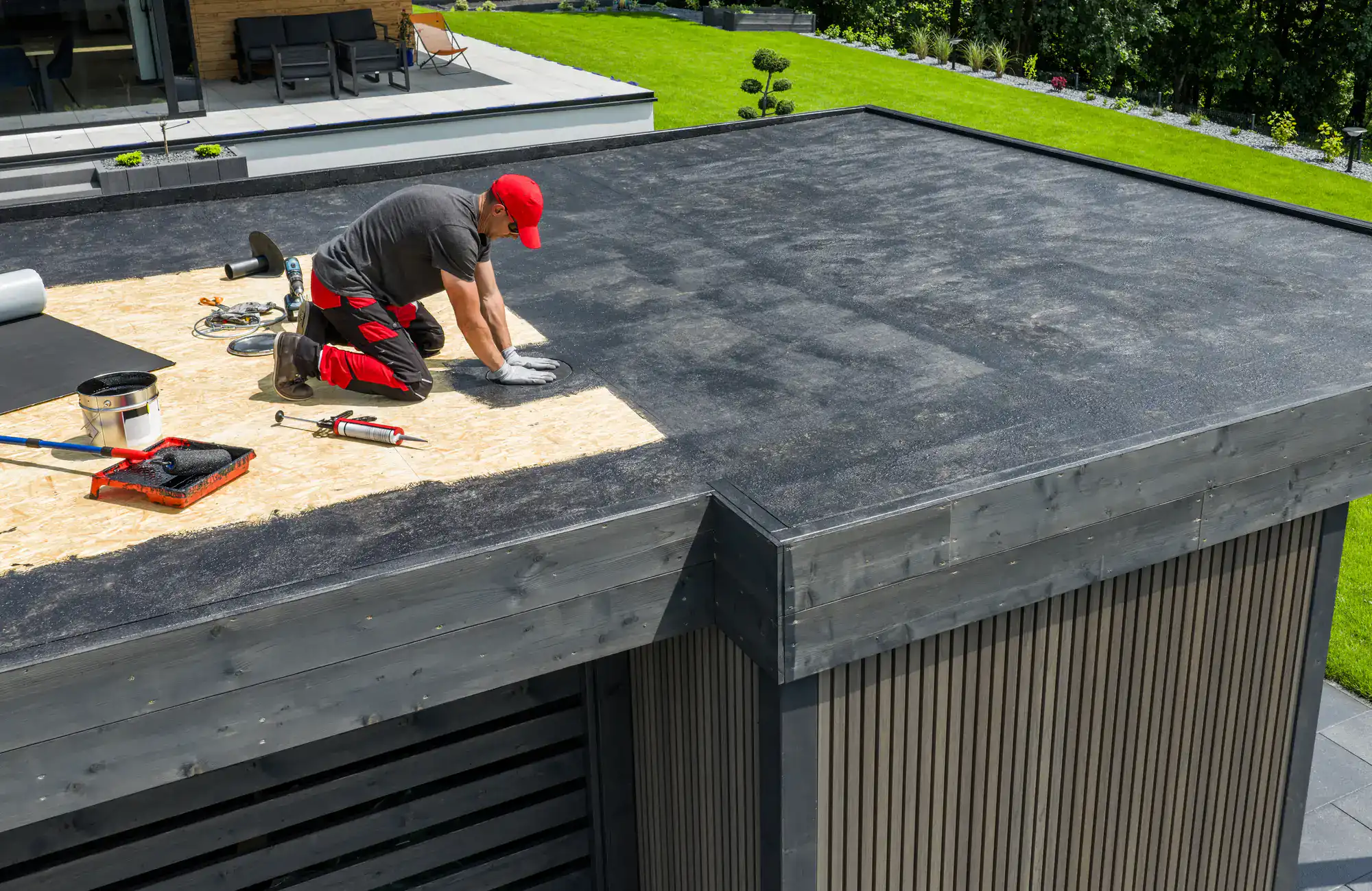
First, we inspect your existing roof using both visual assessment and electronic leak detection equipment. This shows us exactly what’s failing and how much damage has occurred beneath the surface. You get a clear picture of what needs fixing before any work begins.
Next, we remove damaged sections down to the substrate, checking for structural issues that could cause future problems. If your decking is compromised, we address that before installing new roofing materials. This prevents the new roof from failing prematurely.
Then we install your chosen system – whether TPO, EPDM, or modified bitumen – using proper techniques for our climate. TPO gets heat-welded seams for molecular bonding. EPDM gets carefully prepared adhesive connections. Modified bitumen gets torch-applied or adhesive installation depending on your building’s requirements.
Finally, we test the completed system and provide you with warranty documentation and maintenance guidelines. You know exactly what to expect from your new roof and how to keep it performing optimally.
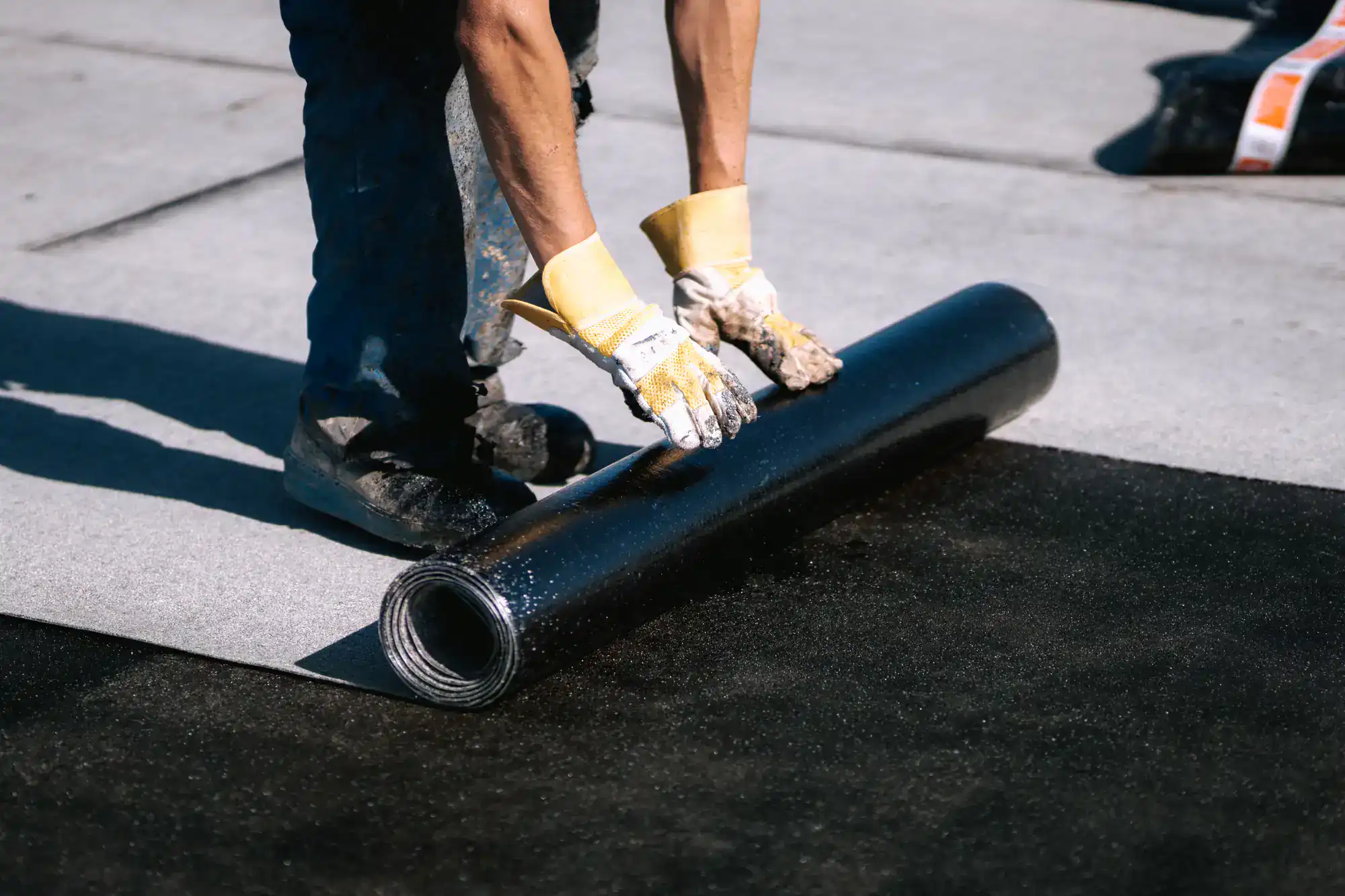
Ready to get started?
TPO roofing gives you excellent energy efficiency with its white reflective surface that reduces cooling costs during Brightwaters’ hot summers. It handles temperature fluctuations well and resists punctures better than many alternatives. TPO systems typically cost more upfront but save money through lower energy bills and longer service life.
EPDM rubber roofing provides outstanding durability in our harsh winter conditions and resists hail damage up to 3 inches. The black surface absorbs heat that can help with winter heating costs, though it increases summer cooling needs. EPDM costs less initially and can last 30+ years with proper maintenance.
Modified bitumen offers excellent waterproofing with multiple installation options. It works well for both residential and commercial applications in Brightwaters, providing reliable performance in our variable climate. The material handles thermal expansion and contraction effectively, which matters when you’re dealing with Long Island’s temperature swings.
Each system includes professional installation, seam integrity testing, and manufacturer warranties. You get detailed maintenance guidelines specific to your chosen material and local weather conditions.
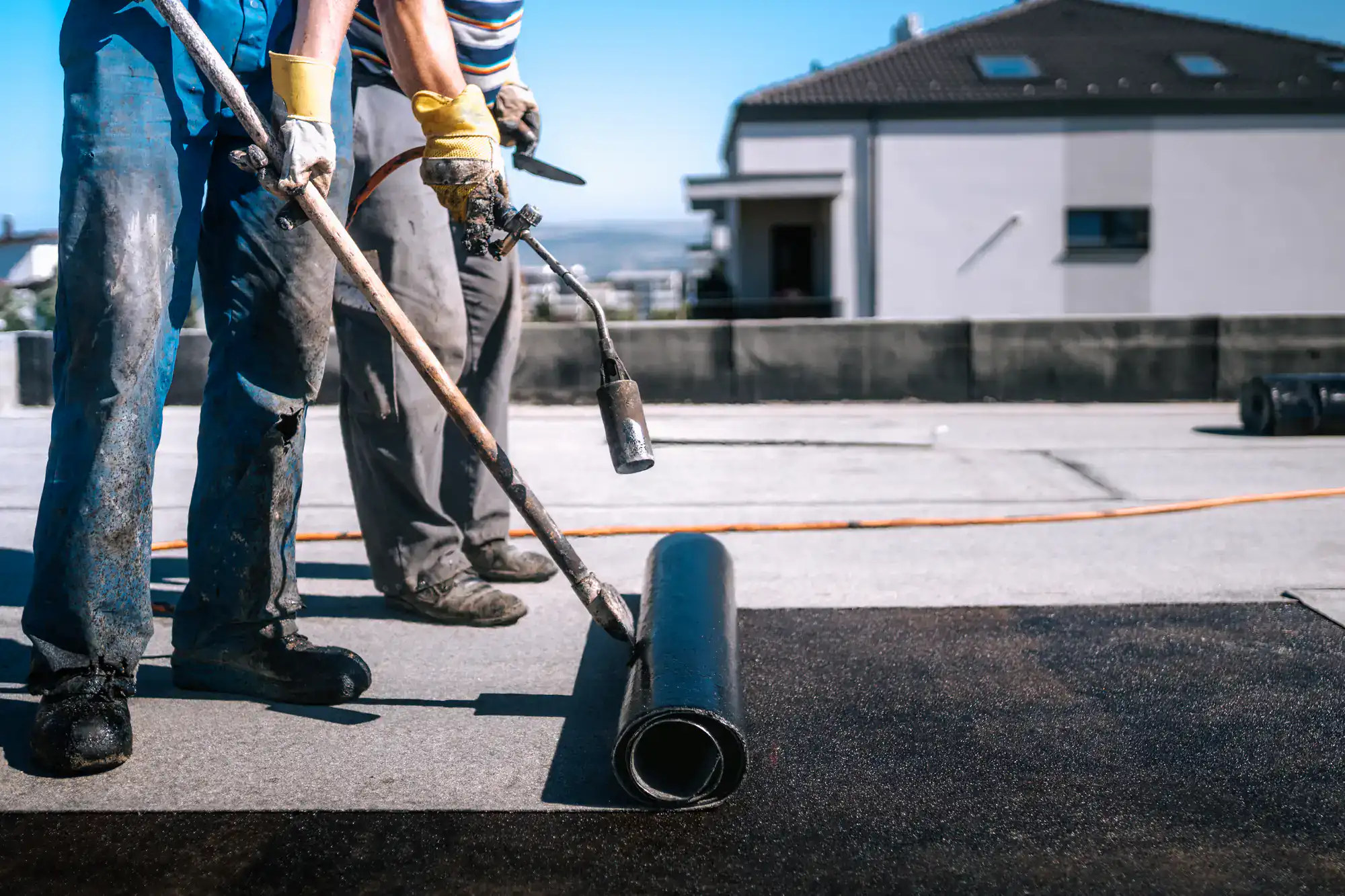
We use electronic leak detection equipment that sends electrical current through your roof membrane to locate breaches with pinpoint accuracy. When there’s a hole or tear, the current flows through to the decking below, marking the exact spot that needs repair.
We also use infrared thermography that identifies wet insulation areas by detecting temperature differences. Wet materials release heat differently than dry ones, so we can see damaged areas even when they’re not actively leaking. This combination lets us find problems before they cause visible water damage inside your building.
This technology means you only pay to repair areas that actually need it, rather than replacing entire sections based on guesswork. Most flat roof leaks are much smaller than the water damage they cause, so precise detection saves significant money.
It depends on your priorities and building type. TPO performs excellently in our climate because it reflects summer heat while handling winter temperature swings without cracking. The white surface reduces cooling costs, which matters during Long Island’s humid summers.
EPDM works particularly well if you’re concerned about hail damage or want lower upfront costs. It’s extremely durable in cold weather and can handle the thermal stress from our temperature variations. The black surface does absorb more heat in summer, increasing cooling costs.
Modified bitumen offers a middle ground with good performance in all our weather conditions. It’s especially suitable for buildings that need extra waterproofing security or have complex roof shapes. We evaluate your specific situation – building use, budget, energy priorities – to recommend the best option for your needs.
With proper installation and maintenance, EPDM systems typically last 20-30 years in our climate, while high-quality TPO can reach 20-25 years. Modified bitumen systems often provide 15-20 years of reliable service. These timeframes assume professional installation and regular maintenance.
Long Island’s salt air, temperature swings, and storm activity do impact roof longevity. Systems that aren’t properly installed or maintained fail much sooner – sometimes within 5-10 years. The key factors are using quality materials, proper installation techniques, and addressing small issues before they become major problems.
We see the biggest difference in lifespan between roofs that get annual inspections versus those that are ignored until they leak. Regular maintenance can extend any system’s life by 5-10 years, while neglect can cut it in half.
Seam failures are the biggest problem we see, especially on roofs where the seams weren’t properly welded or adhered during installation. Long Island’s temperature extremes cause expansion and contraction that stress poorly made connections until they separate.
Ponding water is another major issue. Flat roofs need proper drainage, and when water sits in low spots, it eventually finds ways through the membrane. Our frequent storms can overwhelm inadequate drainage systems, creating standing water that accelerates roof deterioration.
Installation problems cause many premature failures. We regularly see roofs where the substrate wasn’t properly prepared, insulation got wet during installation, or seams were made in unsuitable weather conditions. These issues often don’t show up immediately but cause failures within the first few years. That’s why we only install in appropriate conditions and follow strict preparation procedures.
Repair costs depend heavily on how much damage has occurred and whether it’s been caught early. Simple membrane patches or seam repairs might cost a few hundred to a few thousand dollars. Extensive repairs involving insulation replacement or substrate damage can reach 50-70% of replacement cost.
The key factor is how long the problem has been developing. A small leak caught early might need only localized repair, while the same leak ignored for months could require replacing large sections due to water damage in the insulation and decking.
We use leak detection technology to determine exactly what needs repair versus replacement. This prevents unnecessary work but also ensures we address all the damage. Sometimes what looks like a small leak has caused extensive hidden damage that makes replacement more cost-effective than trying to patch multiple problem areas.
Yes, we provide emergency services for active leaks and storm damage. Flat roof emergencies can cause significant interior damage quickly, so rapid response is crucial. We carry materials and equipment to provide temporary weatherproofing until permanent repairs can be completed.
Emergency service focuses on stopping water infiltration and preventing further damage to your building contents and structure. This might involve temporary patching, tarping, or emergency drainage solutions depending on the situation.
Once the immediate crisis is handled, we schedule permanent repairs using proper materials and techniques. Emergency patches are designed to protect your property, but they’re not long-term solutions. We provide clear timelines for completing permanent repairs and work with your insurance company if storm damage is involved.